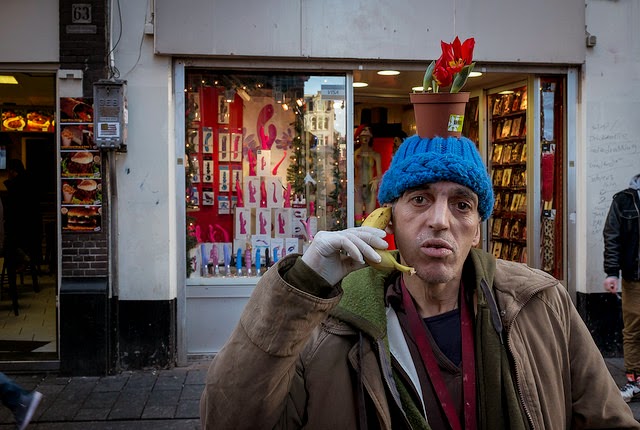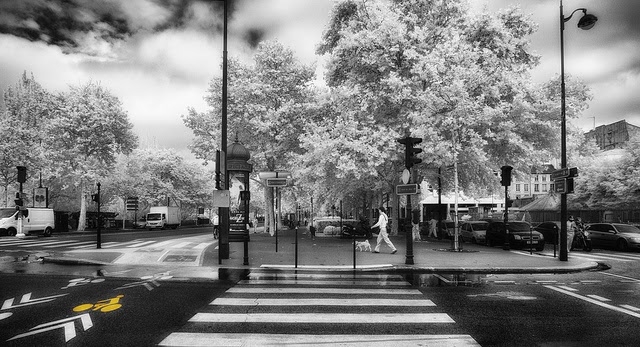- The qualities of a terrific detective
- The importance of personality, character, strengths and weaknesses, and relationships
- The setting/arena
- The inciting incident
- Clues, what kinds there are and how to use them
- Character solutions vs forensic solutions
Today I'm going to conclude by examining:
- Other characters such as the murderer and the victim
- Open versus closed mysteries
- The importance of fair play
Other Characters
Lee Goldberg writes:
"I always begin developing a book the same way – I come up with an “arena,” the world in which our story will take place. A UFO convention. Murder in a police precinct. A rivalry between mother and daughter for the love of a man. Once I have the arena, I think about the characters. Who are the people the story will be about? What makes them interesting? What goals do they have, and how do they conflict with the other characters?"[3]
Putting this in point form:
- What makes these characters interesting?
- What are their goals?
- How does each character's goal (or goals) conflict with those of the other characters?
- How do these goals create obstacles for the hero/main character/detective?
- How do the other characters help the reader understand the setting/arena?
The Murderer
"Once I figure out whom to kill, and how, and of course why, then I start asking myself what the killer did wrong, or what he overlooked, that will lead to his undoing."[1]
- Who does the murderer need to kill?
I find that, often, the first victim is the person the murderer needed to kill. But there are notable exceptions. Agatha Christie
often broke with convention and used her readers' expectation against them (for example,
Murder in Three Acts,
The A.B.C. Murders).
- How does the killer do it?
What is the murder method? An arcane poison? Or a normal poison that no one can figure out how it was administered? Locked room mysteries also fall into this category. Or perhaps (and this is truly diabolical) the victim is forced to kill him/herself (
A Study in Pink,
Se7en).
- Why does the killer need to kill?
P.D. James once wrote that "All motives can be explained under the letter L: lust, lucre, loathing and love."[4] True. We could also say that:
- The murderer wants to prevent certain information from coming out about him, information that would radically transform his life in ways he would hate.
- The murderer wants to take revenge on someone because they radically transformed her life in ways she hated.
- The murderer wants to radically transform his life into something (he thinks would be) infinitely better. And so on.
- What did the killer do wrong? What did he/she overlook?
It seems axiomatic--at least in fiction--that every killer, no matter how intelligent they are or how well planned the crime, will make at least one mistake. With Agatha Christie, often the killer's mistake was trying to be clever and trying to pull the wool over Poirot's eyes. But this was a trap. Poirot assumed the guise of a silly foreigner and so invited the proper English people of his day to underestimate him. His quirks, his foreignness, was, in a way, his disguise.
What the killer did wrong, what he/she overlooked, has to be something the detective could discover, as well as something that plays to his/her strength. There are countless examples of this, but what comes to mind immediately is the episode of
Sherlock entitled
The Great Game.
Sherlock Holmes is wonderful at noticing minutiae and bringing together diverse threads, strands, of information and, from them, creating a synthesis that yields the answer (usually
the 'ah-ha' clue triggers this epiphany). The graphical way the show's writers/producers/director have used to illustrate the information Sherlock notices (words suspended in air) works brilliantly and adds another dimension to the storytelling. (Sorry.
Sherlock is one of my favorite shows and I tend to rhapsodize. Moving on.)
The Victim
Lee Goldberg writes:
"And then I ask myself the big questions—who gets murdered, how is he or she killed, and why? Is it an 'open' or 'closed' mystery?"
Putting this in point form:
a. Who gets murdered?
b. How are they killed?
c. Why are they killed?
d. Is it an "open" or "closed" mystery.
Let's take these one at a time:
a. Who gets murdered?
W.H. Auden, self-confessed addict of English-style whodunits, believed the following about the victim:
i) All your characters should have a reason to want to kill them.
ii) All your characters should have some sort of change in feeling for the victim after they learn of their death.
For example, a character who loathed the victim might feel guilty for wanting her dead; or perhaps just worried that her (widely known) sentiments about the victim will make her the detective's primary suspect.
The important thing to keep in mind, though, is simply that the victim's death must be a catalyst for that most important aspect of storytelling: change.
b. How are they killed?
Susan Spann advises us to kill our characters with style:
"In real life, people get run over with cars, shot with pistols, and decapitated with ancient swords. (THERE CAN BE ONLY ONE!!) In fiction, anything is fair game if you can explain it. Take down your victim with all the creativity you can muster. Pufferfish poison? Absolutely. Shuriken to the face? You’ll see it in one of my novels."[5]
Here are the results of my google-foo:
- Death by Egyptian curse
- Death by puffer fish poison
- Death by ricin
- Death by caffeine
- Death by puppets
- Death by robot
- Death by milk (In honor of Mr. Monk)
c. Why are they killed?
I've already talked, in general terms, about motives. Here we're interested in specifics. We want to know why, within the context of the story, this character was done away with.
Let's say that there are two broad reasons why people murder:
i) People murder to radically transform their life in ways that they think they would like.
ii) People murder to keep their life from being radically transformed in ways they don't think they would like.
In other words, folks murder because they want good things or because they want to avoid bad things. But that's general. To put meat on those bones (or tofu, if that's your preference) we need to know what the murderer wants, what he desires. And to know that we need to know what his strengths and weaknesses are.
I talked about this
last time in regards to the hero, but it applies to the murderer as well.
d. Open vs Closed
Lee Goldberg explains the terms "open mystery" and "closed mystery" as pertaining to the readers/viewers knowledge. If the reader/viewer knows the identity of the murderer from the beginning then the mystery is open. On the other hand, if the reader/viewer finds out about the identity of the murderer at approximately the same time the detective unveils his/her identity, then it's closed.
Goldberg adds that whether a mystery is open or closed is determined by the series concept. For example, in a Columbo episode the viewer usually[2] knew the identity of the murderer from the beginning. Cracker, Death in Paradise, Midsomer Murders and scads of other TV shows are examples of closed murder mysteries. Diagnosis Murder--one of the shows Lee Goldberg both wrote for and produced--had both open and closed murders.
Trying to decide which kind of structure will work best for your tale? Lee Goldberg writes that:
"An open mystery works when both the murderer, and the reader, think the perfect crime has been committed. The pleasure is watching the detective unravel the crime and finding the flaws you didn’t see.
"A closed mystery works when the murder seems impossible to solve, and the clues that are found don’t seem to point to any one person, but the hero sees the connection you don’t and unmasks the killer with it."[1]
The Importance Of Fair Play
"In a true whodunit, the reader enjoys the game as long as you play fair. That means that all of the clues, including the 'Ah, ha!,' have to be shared with the reader at the same time that the hero finds them."[1]
Never withhold clues from your readers. They need to find out about all clues at the same time as your detective.
The detective can't receive crucial information 'off-screen,' the reader needs to see the detective finding everything. Now, that doesn't mean that the detective has to explain the significance of the clue to the reader. Generally that's kept back for the final reveal.
It can be tempting to hide clues from the reader because then it's easier to keep the reader in the dark, it's easier to keep them from guessing the identity of the murderer before you want them to. It is also a sure-fire way to make your readers mad as aggrieved hornets and you don't want that!
How To Play Fair
What's the trick? How do we give readers all the facts and keep them from guessing the identity of the killer? Lee Goldberg writes:
"Obviously, you want to distract, trick, and manipulate the readers and make it as hard as possible for them to solve the crime, but you can do that without keeping important information from them. You just have to be artful about turning their attention away from it, to get them to focus on the wrong things.
"As the author, you have a real advantage. You are the control voice in The Outer Limits. You control point-of-view, in essence the camera through which the reader is seeing and interpreting the world. For instance, if in your story the detectives are focusing on what’s in the room where a murder took place, talking about each item in detail, tracing the history of each piece, that’s what the reader will be thinking about, too, and not the real clue that you are distracting them from: what’s not in the room."
An example of distraction.
I watched an episode of
Diagnosis Murder the other day. In this episode,
Murder with Mirrors, the killer was a magician and the victim was killed by their own trick.
The victim was handcuffed and dropped into a tank of water. He was supposed to use a lockpick, given to him by his accomplice onstage, to pick the handcuffs and free himself. The problem: the key didn't fit the cuffs.
Most of the show was spent trying to figure out who had access to the key and who had a motive to swap the real key with a fake one. The problem: no one who had a motive had the opportunity to switch keys.
The solution: The killer hadn't swapped the key, he'd swapped the handcuffs! The viewer was so busy wondering who had access to the key that they didn't realize someone could have, instead, swapped the handcuffs. At least, that was the hope. As soon as the detective, Mark Sloan (played by Dick Van Dyke), realized this, the case was solved.
In summary. I apologize for quoting so much of Lee Goldberg's article, but it is a terrific article that anyone who wants to write a murder mystery should read. Again, that's
How To Write A Murder Mystery by Lee Goldberg.
Further Reading
In this article Tod Goldberg, Lee Goldberg's brother, talks about why he decided to do the novelization for Burn Notice and what the experience was like:
Notes/References
4. Talking About Detective Fiction, P.D. James
Photo credit: "
241" by
Thomas Leuthard under
Creative Commons Attribution 2.0.














